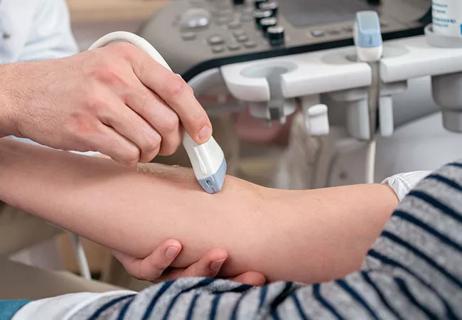Project reduces percent of patients who leave without being seen

Emergency department (ED) patients who leave without being seen (LWBS) put their health at risk and affect a hospital’s reputation. LWBS also can have financial and legal consequences and result in poor patient experience. The national LWBS average stands at 2%, according to a 2021 article in the Western Journal of Emergency Medicine.
Advertisement
Cleveland Clinic is a non-profit academic medical center. Advertising on our site helps support our mission. We do not endorse non-Cleveland Clinic products or services. Policy
In 2019, a team of nurses at Cleveland Clinic Medina Hospital embarked on a project to reduce incidence of LWBS and ensure staff productivity using predictive analytics.
“We pulled data on when the ED was busiest and how many patients were leaving without being seen during those times,” says Danielle Razavi, MSN, RN, Assistant Nurse Manager of the ED during the project. “That helped us make decisions on staffing and where we could flex or add shifts without exceeding our budget.”
At the start of the project, Razavi and the ED nurse manager requested two years of data from the hospital’s business analytics team on patient arrivals by hour and day of the week, as well as percentage of LWBS with patient arrivals. They noticed that the ED’s busiest days were Mondays and Tuesdays and busiest times were from the middle of the day until late afternoon on all days.
The nurse manager presented the information to the Shared Governance Committee for input and to help create a plan to optimize staffing and drive ED productivity. The plan included three primary components:
Advertisement
Each of the interventions has contributed to a progressive reduction in LWBS. When one RN position moved from Saturday to Tuesday, LWBS decreased from 1.42% to .97%. After assigning paramedics to triage, LWBS decreased to .56%, and when a secondary triage nurse was added on Mondays it decreased to .42%.
Overall, the hospital’s ED experienced a 70% reduction in LWBS from baseline after completing its predictive analytics project. The staffing changes not only made the ED more productive, but also adhered to the existing budget.
“As the saying goes, numbers don’t lie,” says Razavi, who now serves as Nurse Manager in the hospital’s ICU. “Once you take a look at data and trends, don’t be afraid to make changes.”
Advertisement
Advertisement

Overestimation of pain can escalate treatment, but underestimation can have other unintended consequences

Study highlights the benefits of clear, concise messaging

How nurses can effect change through professional writing

Fellow critical care nurses welcome additional support and expertise

Pilot study confirms feasibility of conducting additional research on the novel treatment

Study shows ultrasound can be valuable tool for improving patient satisfaction by reducing failed IV insertions

New system uses vital signs to predict need for further intervention

Findings reveal personal and professional factors that influence nurses’ interest in medical research